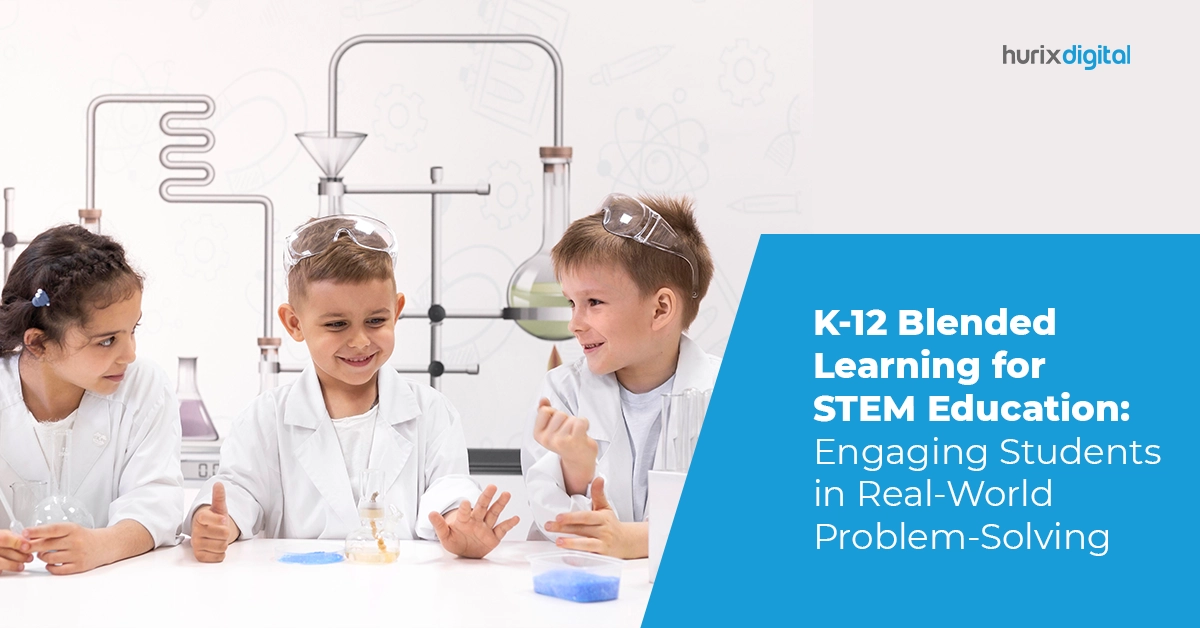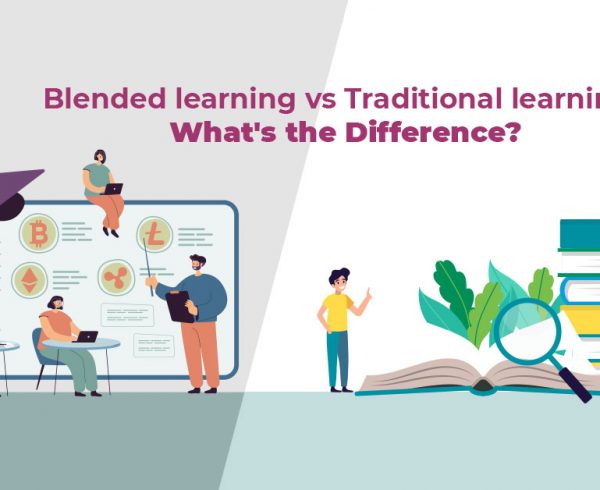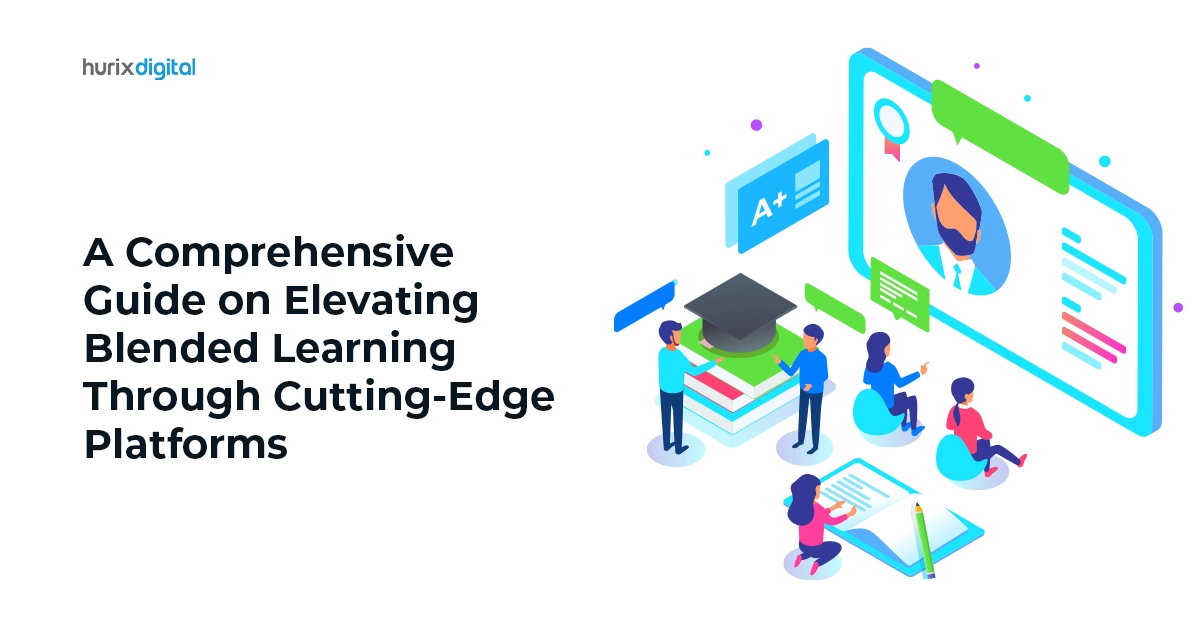Summary
This article provides an overview of blended learning and how it can be used to enhance STEM education. It also provides examples of how blended learning can be used to address real world problems, including engineering, earthquake resistant structures, food preservation, and cultural heritage preservation.
The world is facing complex challenges, from climate change and resource scarcity to pandemics and technological disruption.
To navigate these challenges, we need a generation equipped with not just scientific knowledge but also the ability to apply it creatively and collaboratively to solve real-world problems. This is where K12 STEM education comes in, and blended learning has emerged as a powerful tool to enhance its effectiveness.
In a world driven by innovation, K12 educators are turning to blended learning as a powerful tool to equip students with the critical thinking and problem-solving skills they need to tackle 21st-century challenges.
This model, seamlessly merging online and offline learning activities, is revolutionizing STEM education by immersing students in authentic problem-solving scenarios and fostering a passion for real-world impact.
Table of Contents:
- Blended Learning: Why Does it Work for STEM Education?
- Illustrative Examples of Blended Learning in Action
- Building a Blended Learning Ecosystem for STEM Success
- Wrapping Up
Blended Learning: Why Does it Work for STEM Education?
Blended learning combines the strengths of traditional classroom instruction with the flexibility and personalization of online learning. Students engage in face-to-face interactions with teachers while also exploring concepts and applying skills through online activities, simulations, and projects.
This dynamic approach caters to diverse learning styles and paces, fostering deeper understanding and a more active learning environment.
Here’s why it works for STEM education:
1. Real-World Problem-Solving
Blended learning facilitates project-based learning, where students tackle authentic challenges that connect STEM concepts to real-world applications. This could involve designing earthquake-resistant structures, building solar-powered cars, or analyzing local environmental data.
After conducting a meta-analysis of 66 empirical research papers, researchers found that the project-based learning intervention is known to improve students’ learning outcomes and has a profound impact on engineering and technology disciplines.
2. Active Learning and Collaboration
Online platforms provide opportunities for individual exploration and practice, while classroom sessions allow for collaboration, discussion, and teacher guidance. This combination promotes critical thinking, communication, and teamwork – crucial skills for future STEM professionals.
It has also been found that a combination of digital technology and collaborative tools in a blended learning environment acts as a facilitator, mediator, and results-oriented framework.
3. Personalized Learning
Blended learning allows for differentiated instruction, tailoring the learning experience to individual student needs and learning styles.
Online resources and K12 solutions can offer adaptive learning paths, remedial activities, and additional challenges, ensuring each student progresses at their own pace. Below is an image characterization of the evolution of educational technology chronology:
4. Engaging Technology
Blended learning leverages the power of technology to engage students and make learning more interactive. Virtual labs, simulations, and immersive experiences bring STEM concepts to life, fostering curiosity and a desire to explore further.
The STEM (Science, Technology, Engineering, and Mathematics) approach with blended learning has one major advantage- an intriguing K12 learning strategy to teach children how to reason logically before having them solve actual world problems and master technology.
Also Read: Blended Learning in Healthcare: Modern Approaches for Effective Training
Illustrative Examples of Blended Learning in Action
Here are some examples of how K-12 blended learning can engage students in real-world problem-solving:
1. Engineering Earthquake-Proof Structures
Imagine students collaborating in a virtual lab, testing different building materials and designs using simulations of earthquake tremors. They can then build and test miniature structures in the classroom, comparing their virtual models with real-world results.
This project not only teaches them engineering principles but also fosters critical thinking, teamwork, and communication skills as they analyze data, discuss solutions, and present their findings.
2. Building a Sustainable Future
Blended learning can empower students to become environmental stewards. Online platforms can offer access to real-time data on local air and water quality, while offline activities involve field trips to collect samples, analyze the data, and design solutions for environmental challenges.
Students could create awareness campaigns, propose policy changes, or even develop sustainable energy solutions, all while putting their scientific knowledge into practical use.
3. Combating Food Insecurity
Food security is a global issue, and blended learning can equip students with the tools to address it.
Through virtual simulations, students can explore different agricultural practices and the impact of climate change on food production. In the classroom, they can conduct experiments on plant growth, design hydroponic gardens, or even develop mobile apps to connect local farmers with consumers, learning valuable lessons about agriculture, technology, and social responsibility.
4. Preserving Cultural Heritage
From analyzing historical artifacts using 3D scanning technology to designing virtual tours of ancient landmarks, blended learning allows students to delve into the past and connect it with the present.
They can research historical figures and events, translate ancient texts, or even develop educational games to share their learnings with others, using technology to bridge the gap between the past and the future.
Building a Blended Learning Ecosystem for STEM Success
Implementing successful K-12 blended learning for STEM education requires careful planning and consideration in the following avenues:
- Teacher Training: Teachers need to be equipped with the skills and knowledge to design and implement blended learning experiences effectively. Ongoing support through collaboration, mentoring, and peer observation can further enhance their confidence and efficacy.
- Technology Infrastructure: Reliable internet access, appropriate devices, and user-friendly online platforms are essential for success. Schools must invest in robust internet connectivity, appropriate devices for students and teachers, and user-friendly software platforms.
- Curriculum Alignment: Blended learning activities should be aligned with K12 curriculum standards and learning objectives to ensure effective integration of online and offline components. Concepts introduced online can be solidified through hands-on activities in the classroom, while classroom discussions can spark deeper exploration through online resources.
- Assessment and Feedback: Develop effective assessment strategies that measure both knowledge and skills acquired through blended learning activities. Providing timely and constructive feedback is crucial for student growth and engagement, and utilizing blended learning platforms with built-in assessment tools can streamline this process.
- Content Quality and Variety: Blended learning thrives on engaging and diverse content. Online resources should be interactive, age-appropriate, and aligned with curriculum goals. Utilizing simulations, interactive games, immersive experiences, and authentic data sets can spark curiosity and keep students motivated.
Also Read: Elevate Your STEM Curriculum with AI: A Roadmap for K12 Schools
Wrapping Up
By addressing critical avenues, educators, and administrators can cultivate a thriving blended learning environment that ignites students’ passion for STEM, equipping them with the skills and knowledge needed to face the challenges of the future.
In this regard, note that Hurix Digital believes that by harnessing the power of technology and fostering a culture of active learning, blended learning can bridge the gap between theory and practice. Consider partnering with Hurix Digital to utilize our expertise and innovative solutions in educational technology.
Contact us for more details!











